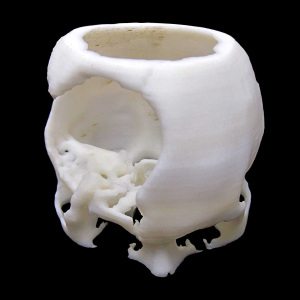This article was originally published on www.techcrunch.com.
The campus of Washington State University in Southeast Washington’s agricultural region looks like a typical land-grant university. The connected mix of art-deco, modern, and post-modern buildings that collectively house the College of Engineering and Architecture hide a strange and incredible secret: that the researchers inside are close to making human-compatible ceramic bone grafts and custom-made prostheses and implants. In short, they’re building cyborgs in Palouse.
“Using 3D-printing technology, and optimum material chemistry, one can control the geometry and shape of the scaffold and bone-like material chemistry at the same time. We can control the resorption and dissolution kinetics in a controlled manner that can be used based on application need. If you can resorp the scaffold, then the ultimate result would be for the natural healing to replace the scaffold and need for a second surgery, as is needed with current technologies,” explains Dr. Bose on a recent visit to her office.
More details at TechCrunch.com.

